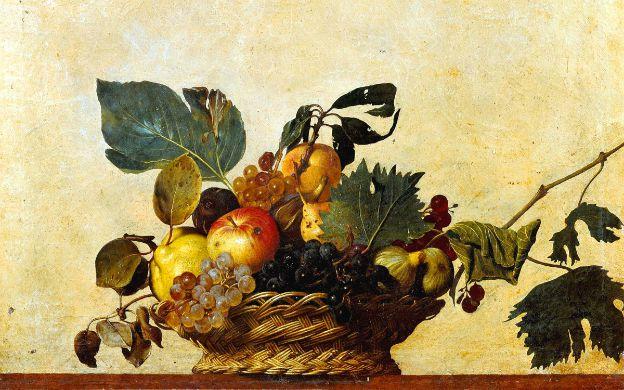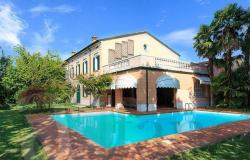[Image above: 'Canestra di frutta' by Caravaggio, 1599, Pinacoteca Ambrosiana.]
With the World Expo well under way, Milan appears to be the “it” destination of 2015. And it deserves it: the capital of Lombardy is a vibrant city with much to offer. However, don’t stop at the main attractions (which we covered here). Venture beyond the tourist tracks and you’ll find incredible treasures.
Here are five lesser-known things you shouldn’t miss in Milan.
1. The smaller churches
- The Chiesa di San Cristoforo sul Naviglio, in the Navigli area. The complex is actually made of two churches, although it looks like a single building. On the left is the most ancient one, thought to be a Romanesque reconstruction of an even older building; on the right is the church built in the 15th century, under commission by the Duke Gian Galeazzo Visconti, who, following a referendum, had it dedicated to St. Christopher to thank him for putting an end to the 1399 plague that had killed 20,000 people.
- The Chiesa di Santa Maria presso San Satiro. Dedicated to the Virgin Mary, it was built on the site of a worship place of the Carolingian era in the late 15th century under commission of the Duke Galeazzo Maria Sforza. The project was designed by Donato Bramante and Giovanni Antonio Amadeo. Despite its small size, the edifice looks monumental thanks to the fake perspective, one of the first examples of trompe l’oeil, created by Bramante in the presbiterium.

- Basilica di Sant’Eustorgio. Founded in the 4th century, it is dedicated to Eustorgius I, bishop of Milan, who was responsible for translating the relics of the Magi (Three Kings) from Constantinople in 344. For this reason, the basilica was for a long time an important pilgrimage stop for those on their way to Rome or the Holy Land. In the 12th century, when Milan was sacked by Frederick Barbarossa, the relics were seized and taken to Germany. In the early 20th century, fragments of the bones and garments were returned to the basilica; they are kept in the Three Kings sarcophagus. Behind the apse, the Portinari Chapel is one of the most celebrated examples of Renaissance art in Lombardy.
2. Biblioteca and Pinacoteca Ambrosiana
Founded at the beginning of the 16th century by Cardinal Borromeo, the library, named after Ambrose, patron saint of Milan, houses important historic manuscripts such as the “Virgilio” with Petrarch’s handwritten notes, Leonardo’s Codex Atlanticus and Piero della Francesca’s De perspectiva pingendi. It includes 30,000 manuscripts, ranging from Greek and Latin to Hebrew, Syriac, Arabic, Ethiopian, Turkish and Persian, and 12,000 drawings by European artists, from the 14th through the 19th centuries. Cardinal Borromeo sent his agents all over to find historic books and manuscripts so he could build what he envisioned as the library of reference for Catholic scholarship in the service of the Counter-Reformation.

The Pinacoteca houses more than 1,500 paintings, divided according to era and pictorial school. Some of the most famous works of art here include Caravaggio’s “Canestra di frutta”, acquired by Borromeo in 1607, probably during a trip to Rome where he met the artist. The realistic precision of the painting and the masterful use of the light make this painting so unique that Borromeo wrote he long looked for a work of art to place by its side, but could not find any. Other notable paintings are those by some of Leonardo da Vinci’s students, including the most controversial of them all, Salaì, with its San Giovanni Battista.
3. The Poldi Pezzoli Museum
The house of great art collector Gian Giacomo Poldi Pezzoli is located only a few steps from La Scala. The 18th-century building still guards an impressive collection of paintings, statues and objects (including weaponry, glassworks, ceramics, jewelry, and furnishings), despite the military invasion of 1848 and the damage suffered during World War II (luckily the works of art had been put in safe storage).

Originally started as the private collection of Poldi Pezzoli and his mother, the museum was inaugurated in 1881, after Poldi Pezzoli’s death. In his testament, he had left the house and contents to the Brera Academy.
Notable for its collection of Northern Italian and Netherlandish/Flemish artists, the museum displays works of art by the likes of Michelangelo, Botticelli, Piero della Francesca, Perugino, Pinturicchio and the famous “Lady Portrait” by Pollaiolo, the symbol of the museum, considered one of the most representative paintings of the Renaissance. It portrays a noblewoman from Florence whose identity remains unknown.
4. The Rondanini Pietà by Michelangelo
Michelangelo’s incomplete marble sculpture is located in the Museum of Ancient Art inside the Castello Sforzesco (Sforza Castle), the historic residence of the most powerful dukes of Milan.
The last sculpture made by the Renaissance genius before his death, the Rondanini Pietà is touching for the level of vitality and spirituality it conveys. It revisits the theme of the Virgin Mary mourning over the dead Christ, which Michelangelo had tackled, masterfully, in the more famous Pietà housed in St. Peter’s Basilica in Rome.

However, the spectral, dismayed figures of this Pietà move away from the idealized figures of Michelangelo’s earlier style, possibly because they were produced at a time when the artist had a growing feeling for his own mortality (he worked on this sculpture from the 1550s until the last days of his life in 1564).
What differentiates it from the earlier Pietà is also the fact that you cannot tell if it is Mary supporting Jesus, or Jesus supporting Mary. When looking at the sculpture from a side angle in fact, it seems as if Jesus is holding Mary up with his back. The feeling one gets is that both are in need of help.
5. Casa degli Omenoni
The House of the Omenoni is a 1565 palace that takes its name from the eight atlantes, supports sculpted in the shape of giant men, which decorate the façade. They are named “omenoni” because it means “big men” in the Milanese dialect. They were sculpted by Antonio Abondio, and show an early reference to the Baroque style.

The overall style of the building and its decorations are said to include references to the art of Michelangelo as well. Artist and writer Giorgio Vasari described it as “pieno in modo di capricciose invenzioni, che non n’è forse un altro simile in tutto Milano” – full of such capricious inventions that there’s no other like it in Milan.
At some point, it housed important works of art, including paintings by Tiziano, Correggio, Leonardo, Parmigianino and Michelangelo. They were dispersed over time. A 1615 inventory also mentions a book of drawings by Leonardo, which scholars identify with the Codex Atlanticus, now preserved at the Biblioteca Ambrosiana.









